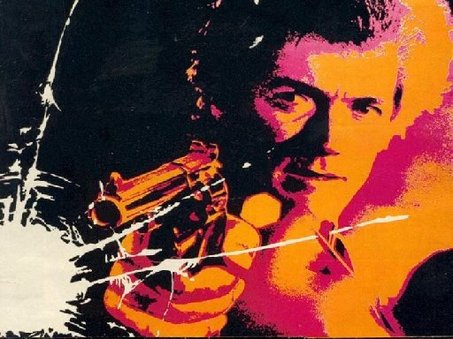
Dirty Harry is a stereotypical American cop thriller set in the ‘70s, directed by Don Siegel with Clint Eastwood playing the main ‘hero’ of the film. The opening sequence is very effective in terms of informing the viewer on the genre, characterisation, the setting, the narrative, the 2 main characters and the time and place of the story.
Within the first few seconds of the sequence, the viewer is presented with a typical police badge, and an ongoing list of police officers from the San Francisco Police Department, who have died on the job. This straight away establishes where the film is set. The last name seen on the list of officers lost in line of duty, ends with the date of 1970, which then establishes the time period of when the film is set.
The non-diegetic sound of the church bells ringing could perhaps symbolise a mark of respect for those who have passed away. Also, church bells sound very serious, which sets the mood for what is about to happen in the next scene. It’s quite a creepy piece of music, which along with the obvious fact it’s a cop thriller, suggests to the audience that something mildly scary is about to come. This music then turns into an even creepier piece of music when we get a low shot of what is clearly the antagonist as the camera is in focus on the barrel of a gun. This confirms all of the audiences assumptions of something serious about to happen; a murder. This low shot helps the viewer establish very quickly who this mysterious character is, and straight away tells what’s going to happen in the rest of the film, helping establish the narrative aswell in the first minute or so. We then see the victim being aimed at with the antagonist’s gun, and as this happens, the music again changes and speeds up throughout the time the viewer can see the victim. This helps build suspense, and also helps make it clear what’s about to happen. Then we are presented with an over the shoulder shot, giving the audience a view from the killers perspective.
After the shooting, the music swiftly changes into smooth, but also quite tense music and the protagonist (Clint Eastwood) is shown looking very cool but professional in glasses and a smart blazer, jumper, tie and shirt. This shows the audience he knows what he is doing, and he is a very knowledgeable and authoritative character, which displays to the viewer he is the ‘hero’ of the film, and he is the one who will bring justice and bring down the killer. As soon as he arrives at the body of the victim, we get a mid shot with the building the antagonist shot from in the background. This is almost reversing the camera angles, as we had a shot looking down on the scene of the murder, and now there is one presented from the view of the protagonist. This helps the audience establish characterisation, it also shows the battle of who has the most power. Eastwood looks up at the building straight away, showing he is a man of great intelligence. Then Eastwood is shown re-tracing the steps of the killer, going to the top of the building in an unusual way, again showing that he is a man very good at his job.
On this journey of him, there is a mid shot of him walking across the roof, and in the background is the Golden Gate Bridge, which is the main icon on San Francisco, reinforcing the fact this is where it’s set. When he reaches the top of the building, the audience is presented with the same over-the-shoulder shot saw at the beginning, however this time the protagonist is there not the antagonist, again suggesting this police officer is a very clever man, who will be sure to bring down the killer.
There is no speech in the opening sequence, except for the line “Jesus” said by Eastwood. This shows he isn’t a very talkative man, and that he doesn’t need to make lots of comments to resolve the crimes.
Using all of the stereotypes of a crime-thriller, Dirty Harry creates an excellent opening sequence as it establishes all of the important factors the audience need to understand for the film.